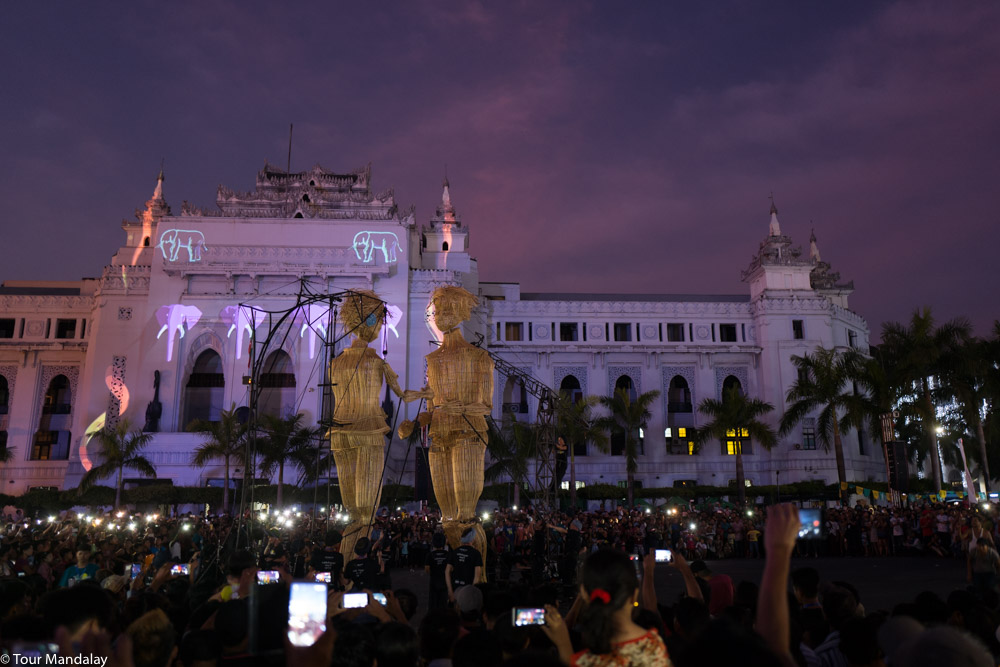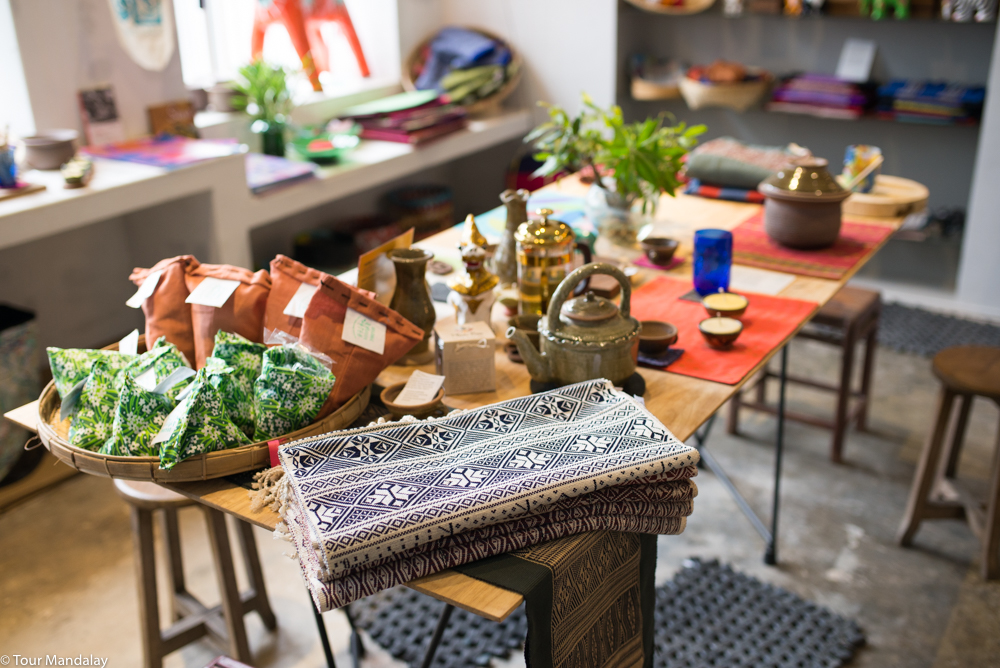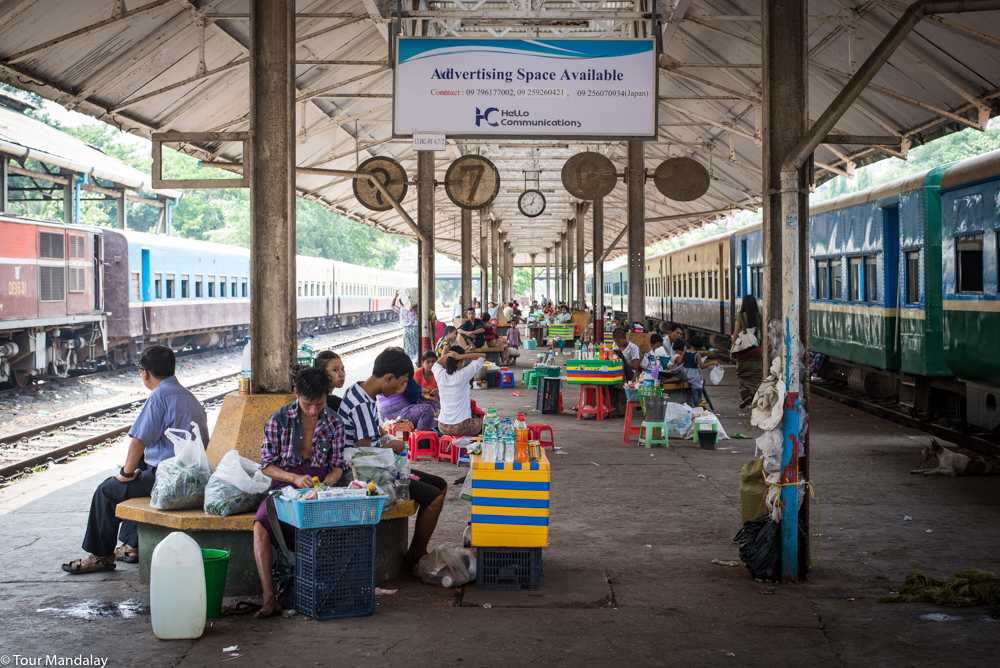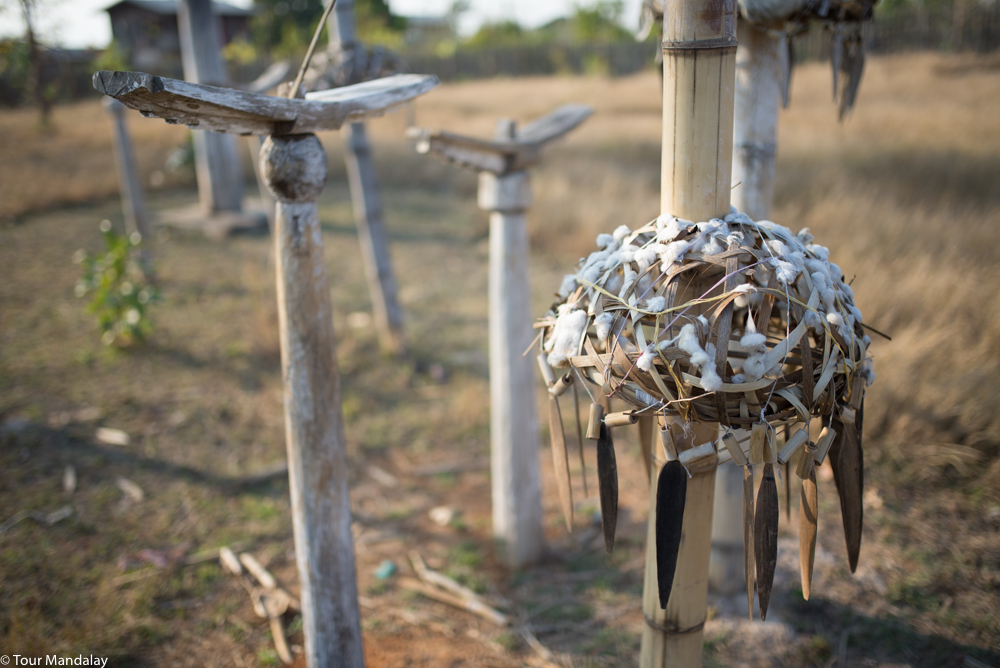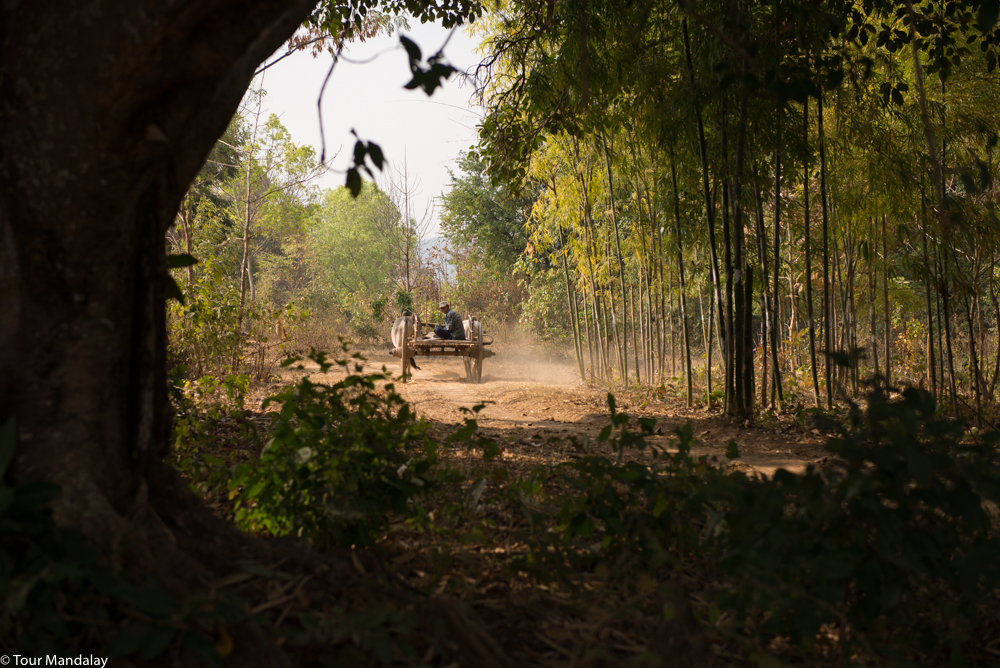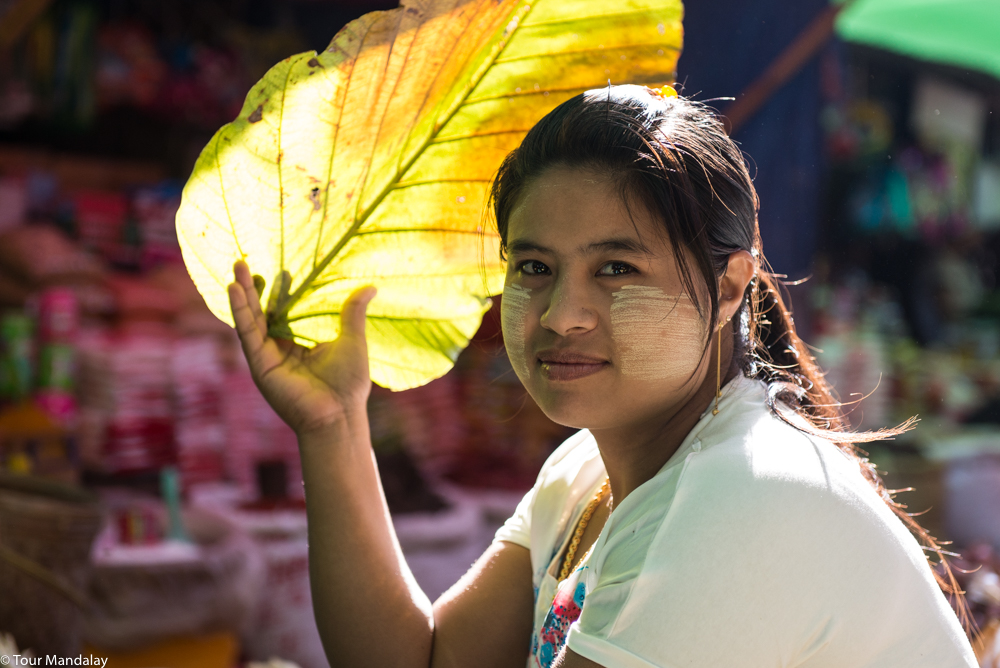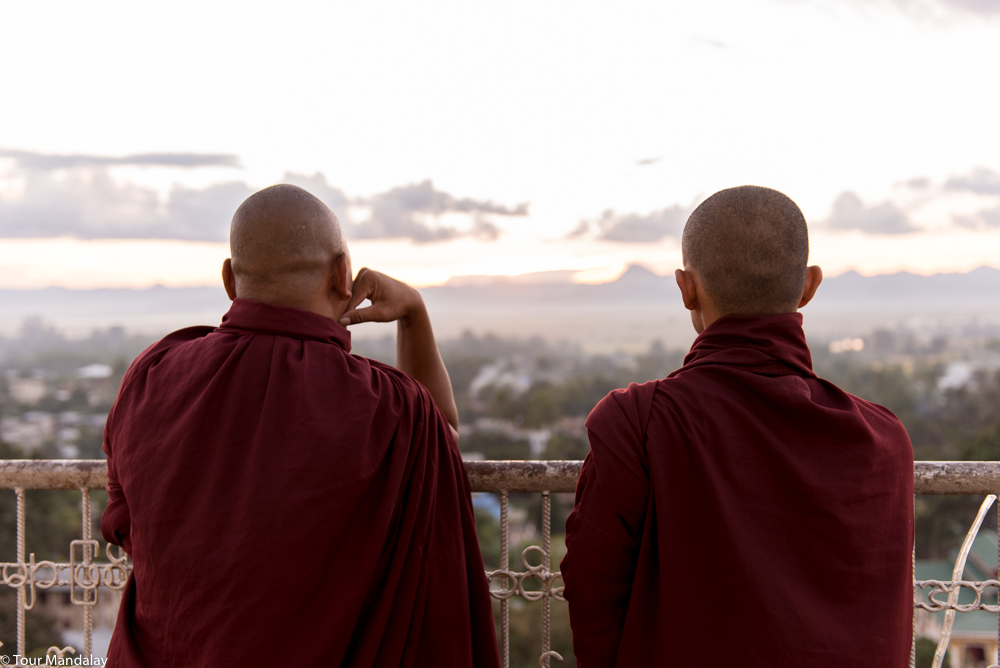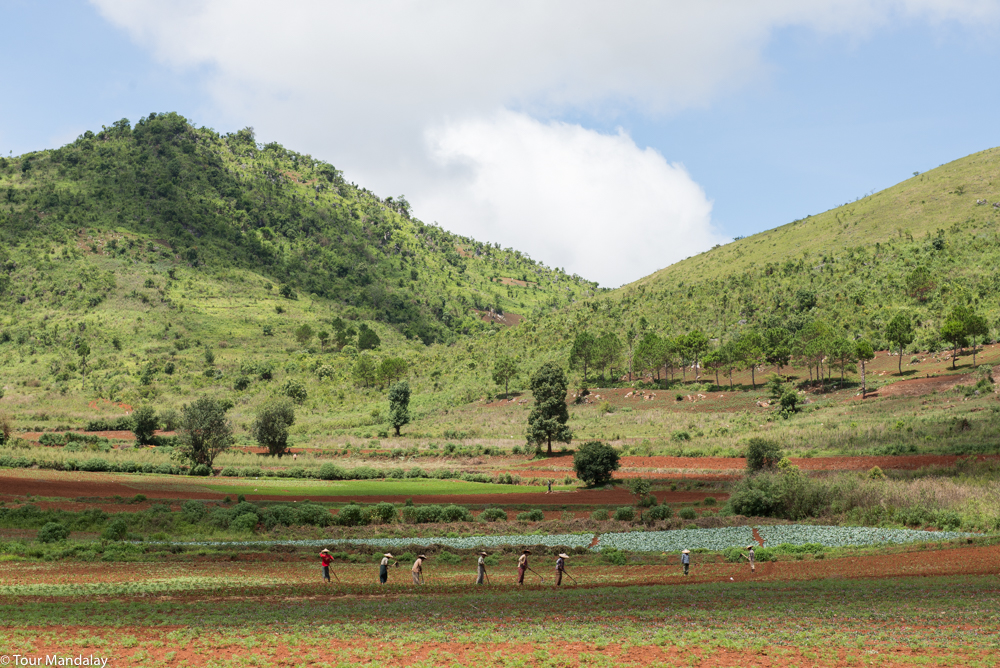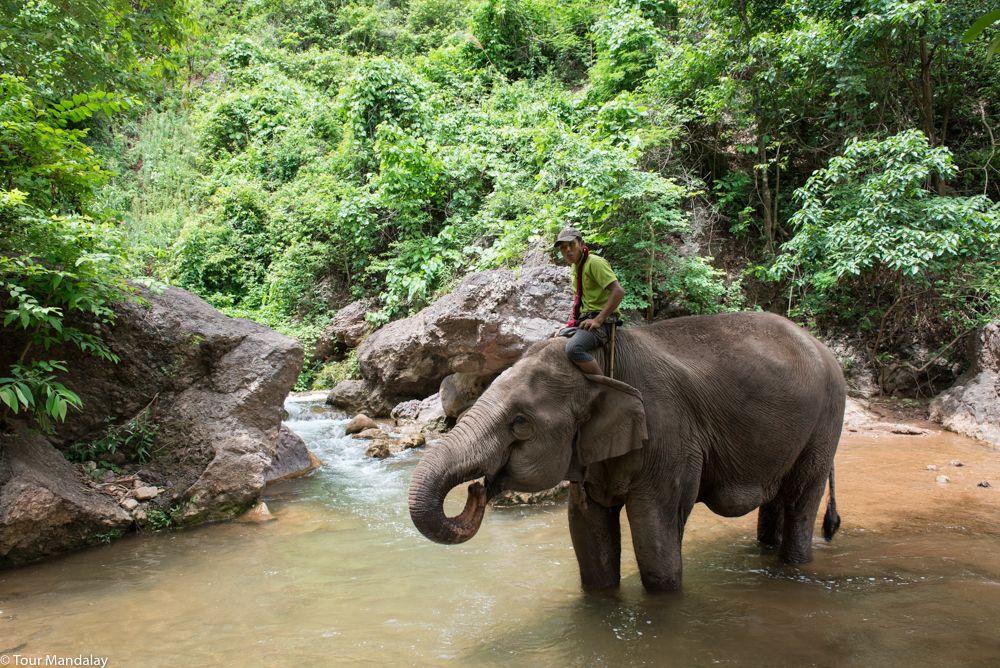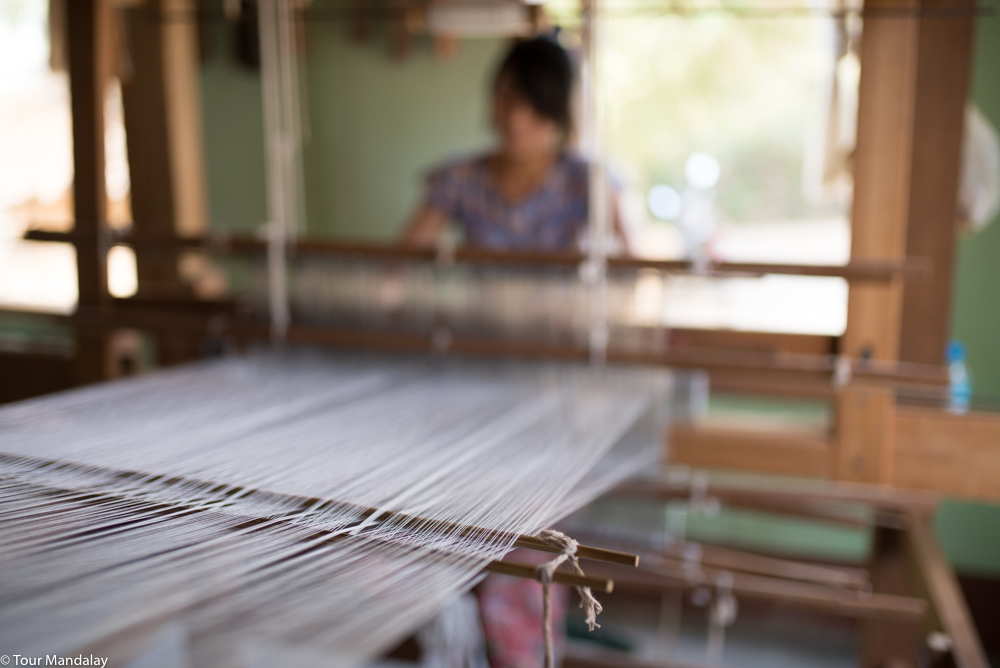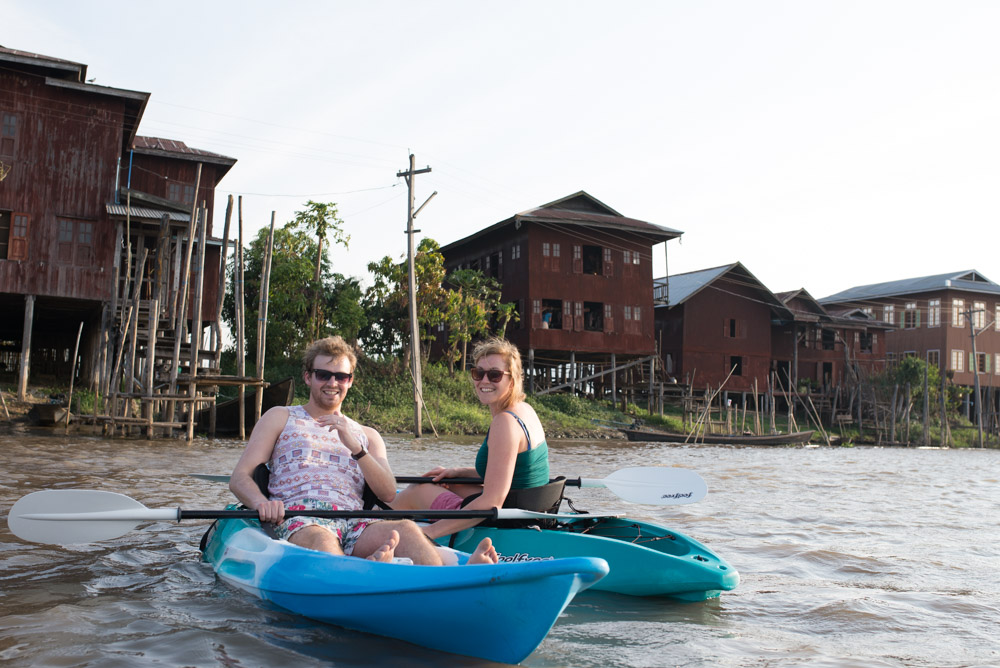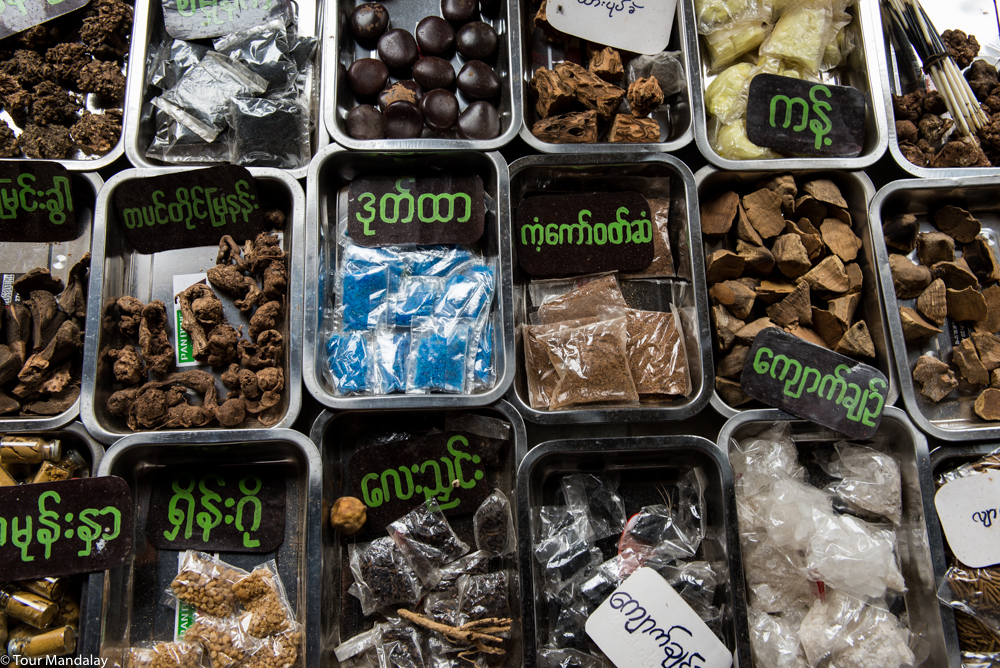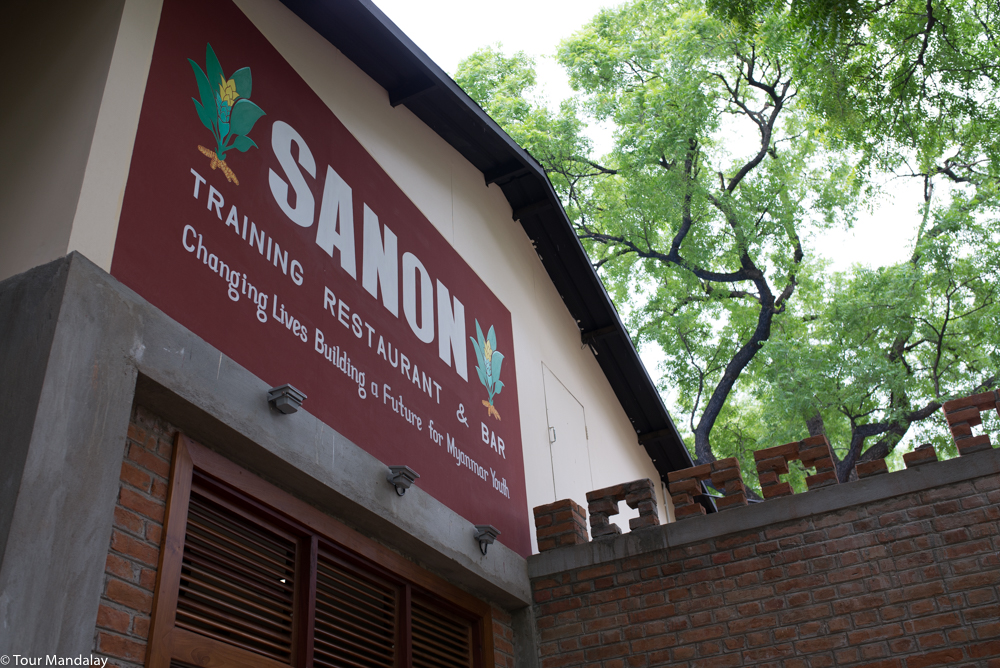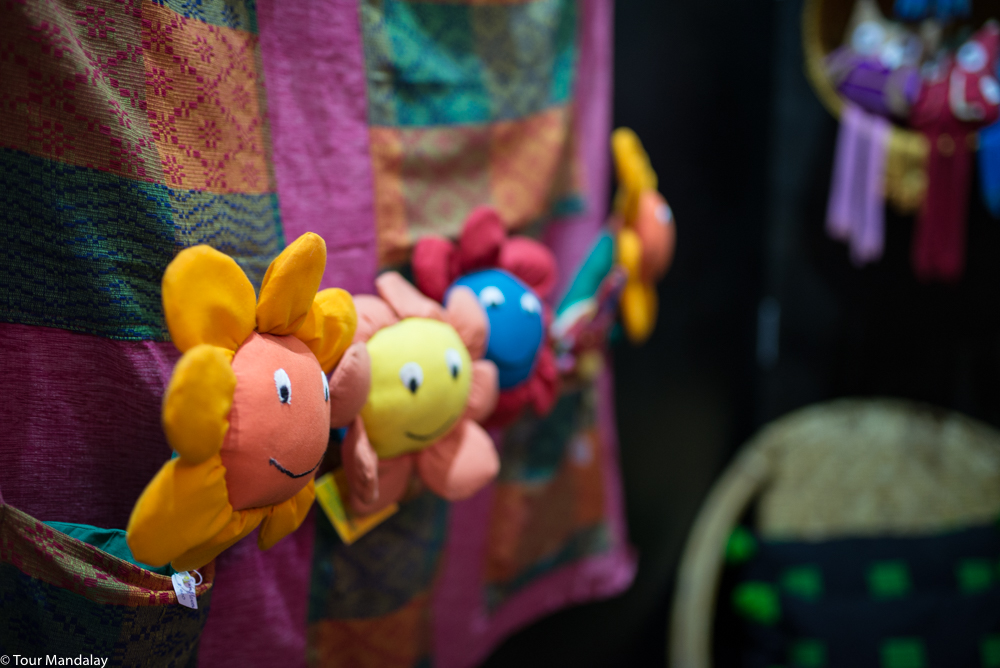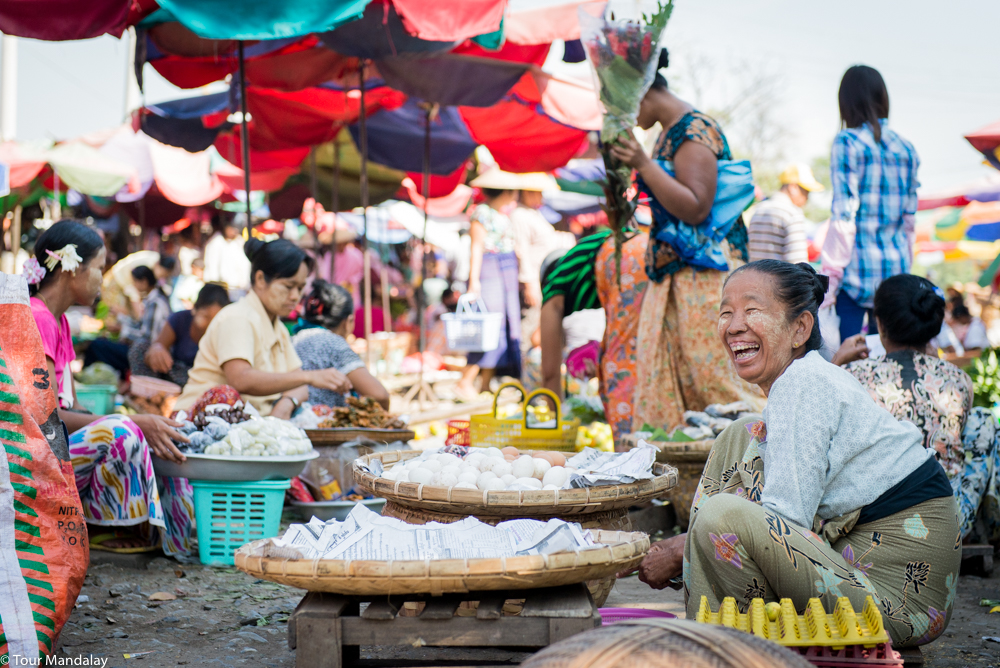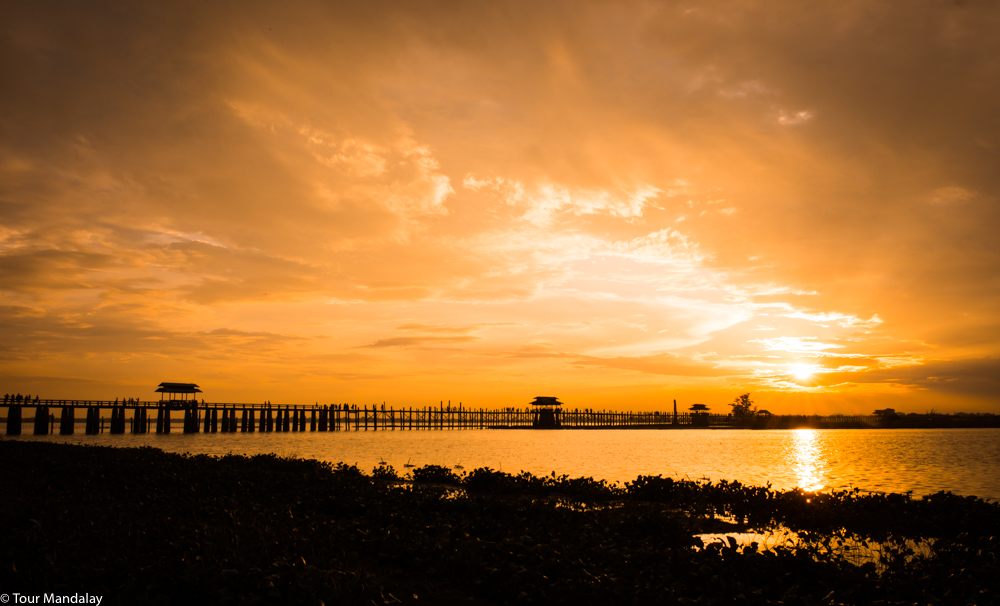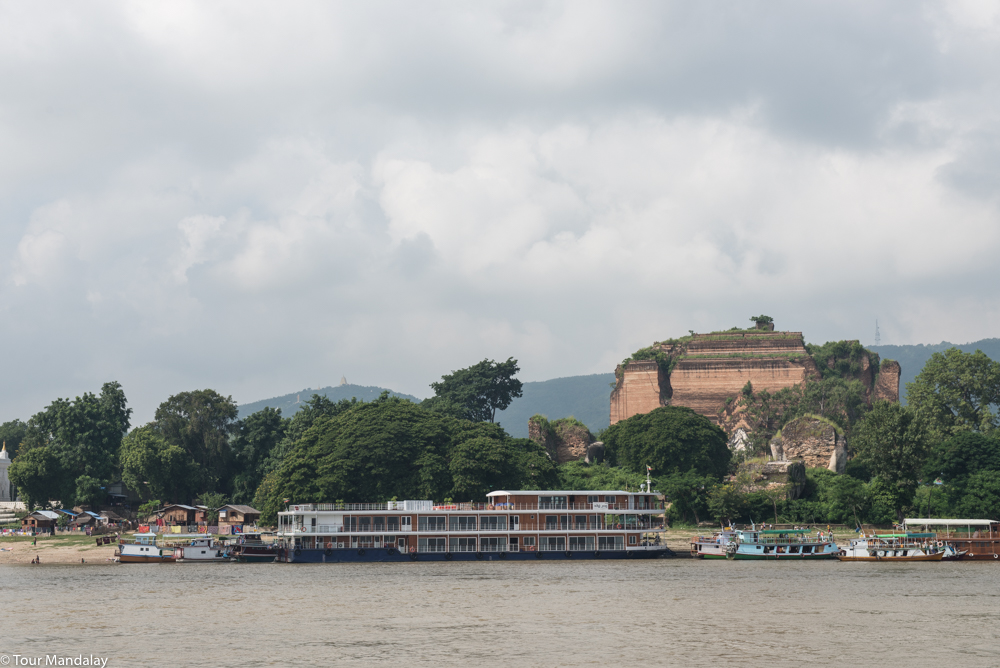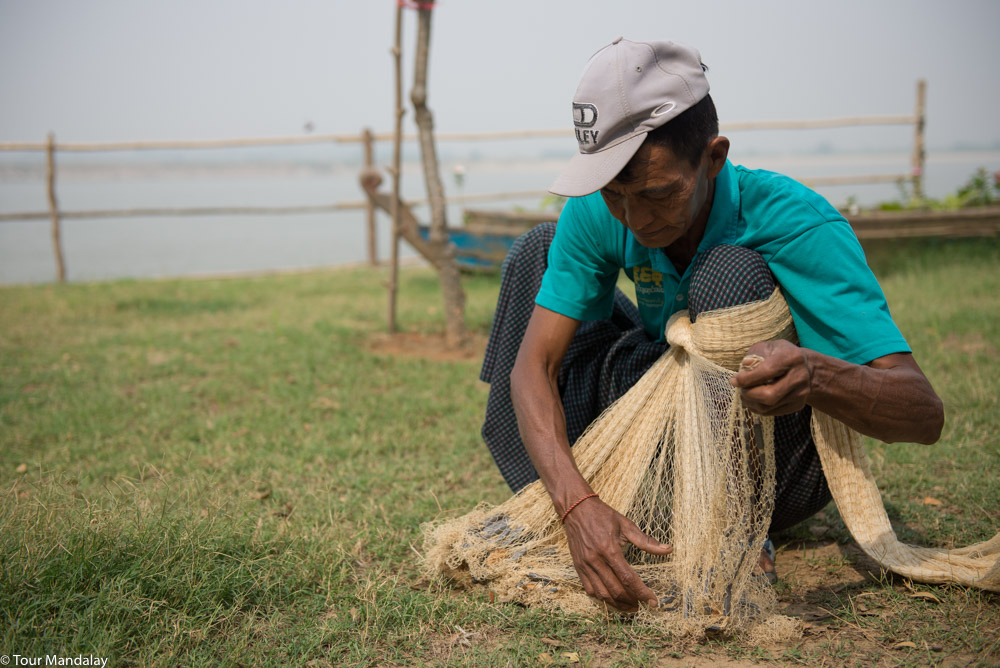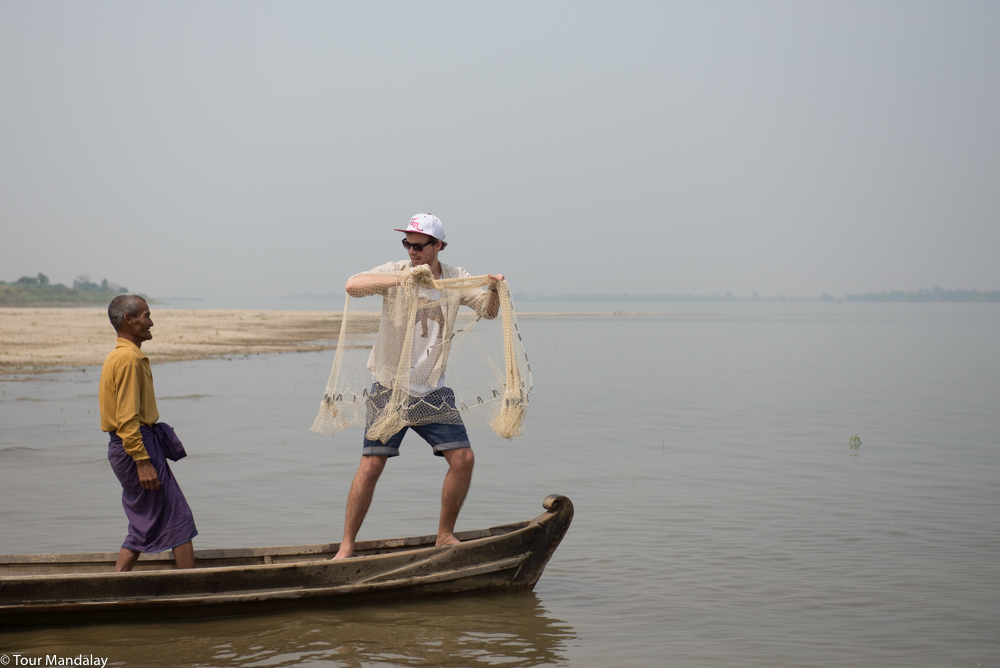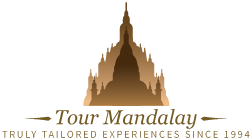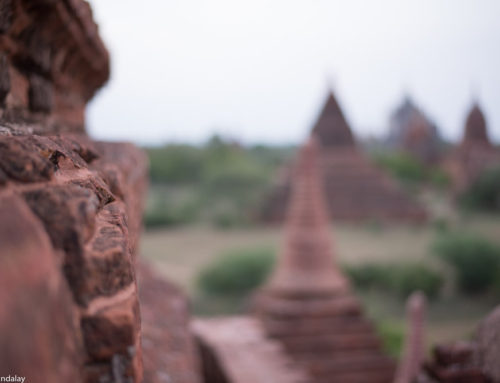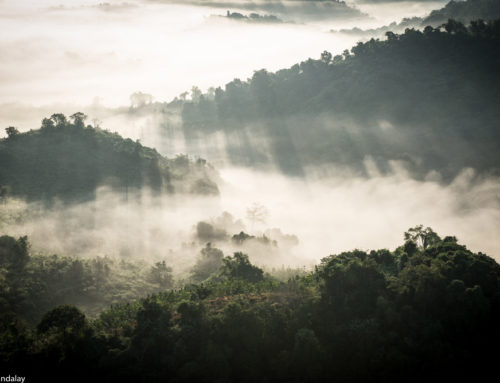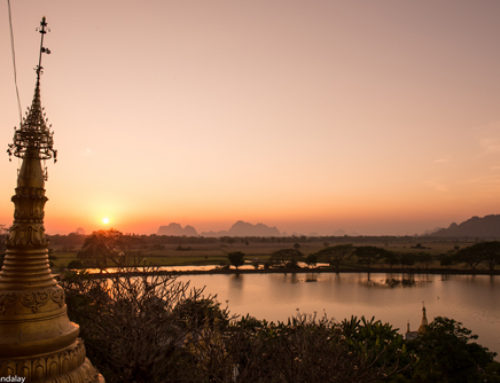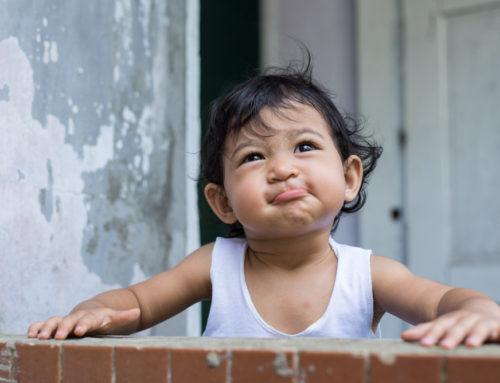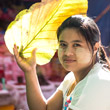Just under two weeks in duration, The Responsible Seven itinerary aims to show off and support some of Myanmar’s best responsible tourism projects, social enterprises, training restaurants and talented local entrepreneurs. We also hope it will help bring awareness to environmental issues such as the drought, deforestation and pollution caused by uncontrolled development around Inle Lake, the continued use of elephants for logging, and the fatal impact electric fishing practise is having on Myanmar’s endangered Irrawaddy dolphin population.
An example of a typical Responsible Seven itinerary can be found below. Please note that this is merely a suggestion and all of the arrangements can be tweaked and tailored to your heart’s content. By clicking on the day, it’s possible to read more about the general logistics and featured excursions.
Day 1 - Yangon (iDiscover / Shwedagon / Shwe Sa Bwe) Shortly after checking through immigration you’ll be met by a representative of Tour Mandalay and escorted directly to your hotel. If arriving on an early morning flight we would recommend making use of the iDiscover’s self-guided walking app (available for both Anroid and Apple). Out of the featured itineraries, we feel the Secretariat & beyond itinerary provides one of the best overviews. Starting at the majestic Secretariat building, you’ll wind your way through the heart of downtown, passing by myriad vine covered crumbling colonial facades, bustling local eateries, art galleries and lively streets. A benefit of using this app is that, other that using a taxi to get there, exploring won’t require the use of a car and iDiscover make a concerted effort to feature small and independently run businesses. A giant puppet performance (arranged by the Institut Français de Birmanie) outside Yangon City Hall in 2016 Reconvene with your guide later this afternoon to explore what Rudyard Kipling described as, “A golden mystery that upheaved itself on the horizon – a beautiful winking wonder that blazed in the sun”. The 99-metre tall Swedagon Padoga is the country’s most famous landmark; one that we believe looks extra impressive at sunset. The current hti (a golden umbrella that adorns the top of pagodas) is decorated with approximately 85,000 jewels, with the centrepiece being a 76-carat diamond. History and opulence aside, the highlight for most is brushing shoulders with the people as they go about paying their respects to Shwedagon itself and the 150 smaller pagodas and shrines that surround. A dinner reservation will be made at Shwe Sa Bwe this evening (PLEASE NOTE: This meal is not included). Founded by Francois Stoupan in early 2013, Shwe Sa Bwe is a hotel and restaurant training center which aims to provide training to financially disadvantaged Myanmar youth looking to pursue a career in the country’s hospitality industry. Skip breakfast at the hotel this morning and enjoy an obligatory bowl of freshly cooked mohinga (fish broth soup with rice vermicelli) at Rangoon Teahouse (PLEASE NOTE: This meal is not included). This will also be a great opportunity to try some laphet yay (Myanmar tea), traditionally served with sweet condensed milk. Just above Rangoon Teahouse you’ll find Hla Day, a social enterprise that works with Myanmar artisans, disadvantaged groups and small local businesses to design, develop and sell quality handmade products with a contemporary twist. Hla Day – the best place for souvenir shopping in Yangon Being located on Pansodan Road, Yangon’s grandest city stretch, you will be perfectly situated to explore some of the city’s downtown core on foot. Just a stone’s throw away you will find Maha Bandula Park, the Yangon Region Court, Yangon City Hall and Sule Pagoda. Interestingly, this was made the center of Yangon by Lt. Alexander Fraser of the Bengal Engineers, who was the person responsible for creating the present street layout of Yangon shortly after the British occupation in 1852. After looping the park, we will then walk past the Yangon Stock Exchange building, through Bank Street and onto the once extremely prosperous Strand Road. The highlight here is the 1901-built Strand Hotel, described by John Murray (a famous British author) as “the finest hostelry East of Suez”. We will then walk one and a half blocks north to the LinkAge restaurant and art gallery, a vocational training restaurant where street and marginalised youth are taught essential hospitality skills (PLEASE NOTE: This meal is not included). To get a true sense of Yangon life, we will next take a short journey on the Yangon Circle Line. Built by the British over 100 years ago, this is still the cheapest and most time efficient way of connecting with Yangon’s outer suburbs. Time permitting, alight at a local market before driving back to the hotel by car. Waiting patiently for the next train at Yangon’s Central Station Transfer to the Yangon domestic airport this morning for a direct flight to Loikaw, the capital of Kayah State. Shortly after being greeted by our ITC (International Trade Centre) recognised local partner, you will be transferred to the home of a local artisan to learn about the production of Kayah sausage. Cooking enthusiasts may wish to try their hand at making their own. Next stop is the Loikaw Weaving and Vocational Training Centre. Start by exploring the centre’s luscious organic garden; here you will learn about the origin of the natural colours used in Kayah clothing, the dyeing process and traditional weaving techniques. We will then travel by car to Hta Nee La Leh, a small animist village located approximately 45 minutes away. A local representative will greet us on arrival to provide a short overview of the village, its people, history and customs. Having surely worked up an appetite, a barbeque lunch will be prepared and served inside a resident’s home nearby. One of Hta Nee La Leh village’s most distinct features is its Kayhtoebo, a traditional animist hunting shrine. Spread over an area a little bit larger than a football pitch, this is an extremely sacred area of land typically used to carry out animal sacrifice. This is the perfect place to learn more about traditional Kayah religious beliefs, festivals and fortune telling techniques. Hta Nee La Leh’s animist hunting shrine Following this, pay a visit to a musician’s house to listen to some live traditional music, followed by a stop at another house to learn about traditional dress. To end the day in style, hop on board an ox-drawn cart to the scenic Seven Lakes. Surrounded by mountains and tropical jungle, the lake provides the perfect setting from which to put your feet up and take in the sunset. An ox-cart clatters off into the distance Drive back to Loikaw and check-in to your hotel. Start the morning with a visit to Demawsoe market (NOTE: this is open on Wednesdays and Saturdays only). This will take approximately 30 minutes by car and is a great way to experience the region’s rich ethnic diversity firsthand, as well as learning about the impressive variety of locally sourced cooking ingredients and rice wine on sale. A lady cools herself with a large leaf at Demawsoe market In the case your travelling date does not coincide with this, a visit to the 105-year old Haw Nan Monastery will be offered as an alternative. Built by the former Chief of Kayah (Saw Bwa Saw Ptar Du Sat Khun Li) around the time of the First World War, taking a look around inside is well worthwhile. It may also be possible to converse with one of the resident monks, but that will depend entirely on how busy their morning schedule is. From Demawsoe (or Haw Nan Monastery), drive over one hour to the settlement of Pan Pet (technically a village made up of five smaller hamlets). Predominantly inhabited by members of the Padaung, a visit here provides a fascinating insight into the life and culture of this world famous tribe. With the aim of learning more than just why the women of this tribe regularly decorate their necks with brass coils, permission will be arranged to enter the home of a resident in Salong Kana (one of the five hamlets of Pan Pet). We will then move on to the hamlet of Penmasong, before embarking upon a moderately challenging uphill trek to the Rang Ku. En route various edible plants can be found, with some being used for medicinal purposes. The guide will be sure to explain this, whilst sharing some of the typical myths and stories often recited by the community’s jungle leader. Midway a locally made packed lunch will be provided. Continue trekking until the summit is reached, with the reward being a rarely photographed view of Pan Pet and its natural surrounds. Continue downhill to Rang Ku, where you will be able to further interact with members of the Padaung community. Return back to your hotel in Loikaw via Thiri Mingalar Taungkwe Zedi or Mya Kalat Pagoda. Both are ideal spots to watch sunset. Looking out over Kayah State’s beautiful landscape With a 170km long car journey ahead, an early start is required. The road to Kalaw winds gently through beautiful Shan countryside, passing by pagodas and markets that few tourists ever make it to. For lunch, we would recommend eating at Sprouting Seeds, a cafe, bakery, eco-shop, yoga studio and training centre (PLEASE NOTE: This meal is not included). Having let your food settle, explore some of Kalaw’s colonial highlights before embarking upon a leisurely countryside stroll. The picturesque outskirts of Kalaw The remainder of the evening is free for you to spend at leisure. For dinner, and for a healthy western-style fix, you may wish to try New Simple Life – the owner here’s working tirelessly to empower Kalaw’s youth. Elephant camps are on the increase in Myanmar, especially now that the government has temporarily halted logging in the country’s most severely deforested regions. Without being able to guarantee the welfare of the elephants at these camps, or the health and safety of the tourists that visit them, Tour Mandalay are reluctant to recommend all but one camp in Myanmar. Founded in 2011, Green Hill Valley is a camp that focuses primarily on providing care to elephants that are no longer fit to work. Rather than pulling in tourists solely for the purpose of riding, it instead seeks to educate people (from home and abroad) about the threats this endangered mammal faces, whilst at the same time protecting the natural environment they inhabit. A mahout takes a retired elephant to a rive to bathe To mix the program up a little, we would suggest hiking to the camp with one of Green Hill Valley’s dedicated trekking guides. Descending through tropical jungle, this mostly downhill trek will take approximately two hours to complete. Shortly after arriving at the camp, we will join the elephants in a shallow river nearby and give them a good scrub down with the mahouts. Once bath time has finished, accompany the elephants back to their bamboo shelters to lend a hand with feeding (NOTE: bathing and feeding will only be possible if the elephants feel like it, they will not be forced). Just before saying goodbye to the elephants, you will also get the opportunity to plant a tree as part of Green Hill Valley’s reforestation program. The is not only to assist with the regeneration of the elephant’s habitat, but also to educate the visitors about the importance of reforestation and risks posed by deforestation. Lunch will be served at the camp’s restaurant. Leaving Kalaw behind, we will now drive 2.5 hours east to Inle Lake, a large fresh water lake famous for its floating gardens and one-legged Intha rowers. Visitors are often surprised to learn that the region’s also home to two vineyards (Red Mountain and Aythaya), and we feel that no trip here is complete without a visit to at least one. Seeing as we will pass by en route, and it boasts the most impressive view, on this occasion it makes sense to stop at Red Mountain. The view from Red Mountain on a sunny afternoon After sampling some of the vineyard’s finest, finish the day with a quick visit to Sunflowers Organic Dye Weaving Studio. Starting her first business back in 2004, Ma Phyu Ei Thein specialises in creating a range of “Myanmar made” woven products made from lotus, silk and cotton. These items are then coloured using dyes from fruit, roots, flowers and other organic substances. Working hard on a loom at Sunflowers Organic Weaving Centre in Nyaung Shwe Transfer to your hotel to spend the remainder of the day at leisure. There is no denying Inle Lake’s beauty, but with increasing tourism numbers has come increased and uncontrolled motorboat usage. With the aim of trying to limit this, today’s activities will consist of cycling, hiking and kayaking around the lake’s circumference. The route and order will vary depending on the location of your hotel, and the pace and distance adapted depending on the group’s level of fitness. Ultimately, the aim is the same however and that is to reduce noise pollution and avoid adding to the further build up of boats around key tourist areas. Kayaking quietly around the edge of Inle Lake Later this afternoon return to your hotel for some well-earned rest. Leaving the rolling green countryside behind, fly to Bagan, Myanmar’s capital of culture and home to thousands of ancient pagodas and temples. Considered one of the richest archaeological sites in Asia, the area is testament to the power and pious nature of Myanmar’s past rulers. Although it won’t be possible to visit every temple during your time here, start by exploring some of the most iconic. Our first recommendation would be the golden Shwezigon, a pagoda that has been damaged by earthquakes several times over the centuries, but still stands whilst retaining some of its original features. An unexpected highlight of any visit here, especially for photographers, is walking the long sunlit corridor that leads up to it. Occasionally you will find a local market being held here, with plenty of traditional and locally sourced produce on display. Local produce on display inside the hallway leading up to Shwezigon Pagoda Before moving on, stop for some lunch at the recently opened Sanon. Launched by Myanmar Youth Development Institute with the help of FRIENDS International, Sanon is part of the successful TREE (Training Restaurants for Employment and Entrepreneurship) Alliance restaurant group. Tour Mandalay would highly recommend ordering the chicken burger with papaya pickles and harissa mayonnaise. (PLEASE NOTE: This meal is not included) Sanon, one of our favourite restaurants in Bagan From Sanon, travel to Old Bagan stopping off at MBoutik en route. Not only is this where you will find the best selection of quality souvenirs in Bagan, but shopping here indirectly supports the economic and social development of vulnerable communities in the Magwe Region (the dry zone of central Myanmar). Colourful souvenirs on display in MBoutik Another must see architectural wonder, and one of Bagan’s grandest in terms of size and design, is the 920-year-old Ananda temple. Build using a fusion of Mon and Indian inspired techniques, the temple houses four standing Buddha images, each seemingly keeping an eternal watch over the north, south, east and west entrances. If time permits, we will next pay a visit to the workshop of one of Bagan’s most renowned lacquerware masters, U Maung Maung (easily identifiable thanks to his magnificent bushy moustache). Lacquerware has been produced in Bagan since the 11th century and still plays an important part in daily life, art and religious practice to this very day. Perhaps what is most interesting is that the production process has remained unchanged for centuries, giving a sense of authenticity and an assurance that the products on display are truly authentic. Please note that there is no assurance U Maung Maung will be available, but a member of his family will be. U Maung Maung, Bagan’s lacquerware master Finish the day watching the sunset over Bagan’s temple-strewn plain. Today we would recommend exploring Bagan unaccompanied, but with the help of an e-bike. This is a great way for you to appreciate first-hand the size and archeological diversity of Myanmar’s sun-scorched ancient capital. No cars will be used either, thus helping to minimise your carbon footprint. Transfer to Nyaung U (Bagan) airport in time for one of the first flights to Mandalay. Having been heavily bombed by the Japanese in 1942, and later again by the allied forces in 1945, little remains of old Mandalay, but that’s certainly not to say it should be written off. It has risen from the ashes to become a young, lively and vibrant city, famous for its culture, education and arts. Start your exploration of the city with a trip to one of Mandalay’s bustling local markets, a great way to naturally cross paths with the city’s local residents as they go about their daily food shop. From here we’ll then hop into a rickshaw to the Golden Palace Monastery, passing by the palace walls and moat en route. Smiles don’t get much better than this The Golden Palace Monastery, or Shwenandaw as it’s also known, was built in 1878 by the last monarch of Myanmar, King Thibaw. Previously it served as the apartment of King Mindon (King Thibaw’s father), but due to Thibaw believing the building was haunted by his father’s spirit, he had it moved and converted into a monastery. Thanks to this decision, the building survived the heavy bombing and is the only building of the original Royal Palace that still stands today. Although the colour from the gold gilding has mostly faded, the intricate teak carvings and glass mosaics provide an immediate reminder of how grand this monastery, and the original Royal Palace, once would have been. From here we’ll then take a short drive to Kuthodaw Pagoda, home to the world’s largest book. Built by King Mindon (as you’ve correctly assumed, an important figure in Myanmar’s history), the main stupa is surrounded by 729 stone slabs, inscribed on both sides with a page of text from the Tipitaka (the entire Pali Canon of Theravada Buddhism). Sadly, the complex you see today is just a shadow of its former self, no thanks to British soldiers stripping it of its most valuable materials shortly after the annexation of Mandalay in 1885. From top to bottom, the pagoda stood bare for just over a decade. From Kuthodaw Pagoda, drive 30-minutes out of town to Amarapura, the penultimate royal capital of Myanmar from 1842 – 1859 (it was also the capital 1783 – 1821). The main attraction here is the 1.2 kilometre long U Bein Bridge, believed to be the longest teak wood bridge in the world. Popular with international and domestic tourists alike, it tends to get crowded here in the afternoon, but that doesn’t take away from the historical importance and the fact it’s authentically local in style. If timed for sunset, some phenomenal views of the bridge can be observed from a quiet bank on the adjacent side. The sun sets far away from U Bein Bridge’s crowds Transfer to your hotel in time for dinner. At approximately 07:30, you’ll be picked up from your hotel (or a place of your choosing) by a dedicated Living Irrawaddy Dolphin Project guide and escorted to Mandalay jetty; the Living Irrawaddy Dolphin Project is a social enterprise business set up to create benefits for communities and boost nationwide conservation efforts. No thanks to electric fishing, mercury poisoning, accidental entanglement in fishing nets and habitat degradation, it is no surprise that Myanmar’s Irrawaddy Dolphin population is close to extinction; the number is currently estimated to be somewhere in the region of 80. A small handful of organisations including Living Irrawaddy Dolphin Project, are working closely with seven cooperative fishing villages (Singu, Myitkangyi, Sin Kyun, Aye Kyun, Sein Pankon, Myaysun and Intaung) with the aim of increasing awareness on the matter and providing support to the small handful of skilled fishermen that work symbiotically with these precious mammals on a daily basis. Having arrived at Mandalay jetty, board the colourful Living Irrawaddy boat and make yourself comfortable as your guide runs through some important health and safety information and provides a brief overview of today’s arrangements; it’s important to stress that these are subject to change as the itinerary is heavily dependent on weather conditions and prior dolphin sightings. Leisurely cruising upstream, it won’t be long until we pass the half-finished Mingun Pahtodawgyi; if King Bodawpaya had completed construction of this, it would have been the tallest temple in the world. However, on the back of an astrologer’s advice, the king halted the build in the belief that he would die if it was ever finished. Superstition aside, this worked in the king’s favour as, in 1839, a strong earthquake rattled the structure so intensely it left huge cracks along the walls and parts of the corners collapsed. If you’re interested and time permits, we can always stop off here before returning to Mandalay later this afternoon. Mingun Pahtodawgyi as seen from the Irrawaddy At approximately 09:00, we’ll cast anchor at the village of Sin Kyun, the closest cooperative fishing village to Mandalay; unable to rely on fishing to make a living all year round, the residents of Sin Kyun are also renowned for the sale and production of traditional bamboo hats. Learn about this first-hand and mingle with the villagers as they go about their everyday life. Returning back to the river, our next stop will be the village of Seinpankon, Myaysun or Aye Kyun (again, this will depend on prior dolphin sightings, weather and river conditions). Being a couple of hours away, and now that we’re well and truly in the dolphin conservation zone, this will be a good time to get out your binoculars and start searching for this ever-elusive, round-nosed mammal. NOTE: Dolphin sightings cannot be guaranteed, but we’ll be working closely with the cooperative fishermen to find them in a sensitive manner. Spend time with cooperative fishermen and their families Upon arrival at the village in question, meet with your hosts who’ll serve up a delicious locally sourced “fisherman’s lunch”. With your appetite now satisfied, reconvene with the cooperative fishermen who’ll tell you everything you need to know about the Irrawaddy Dolphins, their symbiotic relationship and the ongoing struggle to steer them away from the brink of extinction. The fishermen will then demonstrate how to how to prepare and cast a traditional fishing net, before handing over for you to try. Seeing as the technique takes more time than we have to master, it’s likely the experience will provide many laughs and great photo opportunities for all involved. Try your hand at casting a lead-weighted traditional fishing net – it’s harder than it looks! Wanting to return to Mandalay by dusk, wave farewell to the village and gently cruise back downstream. With no more village stops scheduled, the remainder of the journey is free for you to relax, admire the passing scenery and carry out a bit more dolphin spotting. Before returning to Mandalay jetty, you’ll have an option to stop off at the cracked Mingun temple (Mingun Pahtodawgyi), which we passed by earlier this morning. Construction began in 1790, with King Bodawpaya aiming for it to be the tallest in the world at 150-metres. Equally as grand is the 13-foot tall bronze bell that can be found nearby; weighing 90-tonnes, it has been recorded as the heaviest functioning bell in the world at several times in history. Once anchored back down at Mandalay jetty, return to your accommodation and freshen up in time for dinner. Transfer to the airport in time for your international flight departure. Keen to design your own ‘Responsible Seven’ itinerary? Get in touch with one of our specialists by writing to info@tourmandalay.travel. 